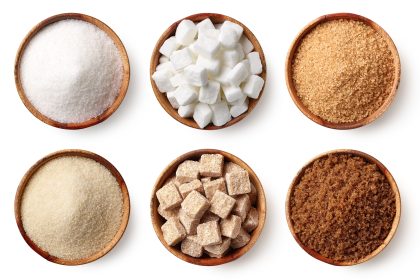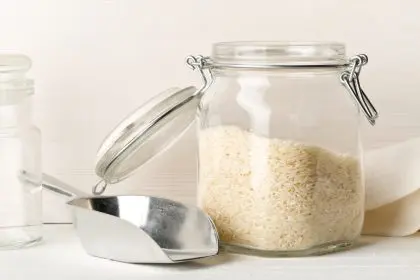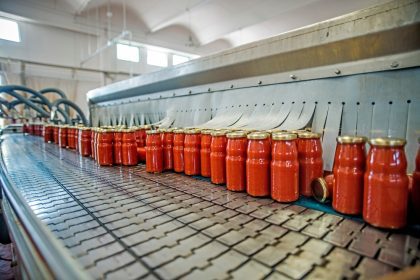The struggle to balance healthy eating with satisfying flavors remains one of the greatest challenges for anyone trying to maintain or lose weight. The good news? Cutting calories doesn’t have to mean cutting taste. Culinary science has evolved dramatically in recent years, revealing numerous techniques that actually intensify flavors while reducing less healthy components. By understanding a few fundamental principles about how we perceive taste, anyone can transform their kitchen into a laboratory for creating meals that delight the palate without expanding the waistline.
The science behind flavor perception
Our experience of flavor extends far beyond the basic taste receptors on our tongues. The human sensory system integrates information from multiple sources—aroma compounds detected by nasal receptors, texture sensations from mechanoreceptors, temperature signals, and even visual cues—to create what we recognize as flavor.
This complex system explains why simply removing fat or sugar often leaves food tasting bland. These components don’t just add calories; they serve as carriers for flavor compounds and provide mouthfeel that contributes significantly to satisfaction. The most successful reduced-calorie cooking strategies address these multiple sensory pathways rather than focusing solely on calorie reduction.
Research from nutrition science departments at major universities demonstrates that flavor perception can be manipulated through various cooking techniques. For example, slow-roasting vegetables concentrates their natural sugars, making them taste sweeter without adding any sweetener. Understanding these principles provides the foundation for creating deeply satisfying reduced-calorie meals.
The 7 most effective flavor-boosting techniques that cut calories
- Umami maximization transforms plant-based dishes into satisfying meals that rival their meat-heavy counterparts. By incorporating naturally umami-rich ingredients like dried mushrooms, tomato paste, nutritional yeast, or small amounts of aged cheese, dishes develop a savory depth that makes them feel more substantial without adding significant calories. A tablespoon of tomato paste adds only about 13 calories while dramatically enhancing the flavor profile of soups, stews, and sauces.
- Aromatic intensity through herbs and spices offers perhaps the greatest flavor-to-calorie ratio available in cooking. Fresh herbs like basil, cilantro, and mint add virtually no calories while providing distinctive flavor profiles. More potent dried spices such as cumin, smoked paprika, and chili powder can transform otherwise plain ingredients. Research indicates that certain spices, including cinnamon, turmeric, and ginger, may also offer metabolic benefits that support weight management goals.
- Acid balance serves as a critical yet often overlooked component of flavor development. A splash of vinegar, citrus juice, or fermented ingredient brightens dishes and creates the perception of greater complexity without adding calories. Acidity also helps reduce the need for salt, which, while not caloric itself, often contributes to water retention and bloating. Different acid sources—from the floral notes of Meyer lemons to the rich complexity of aged balsamic vinegar—can dramatically alter a dish’s character.
- Caramelization and Maillard reactions unlock intense flavors through proper cooking techniques rather than additional ingredients. These chemical reactions, which occur when proteins and carbohydrates are exposed to heat, develop hundreds of new flavor compounds. Properly browning vegetables, for instance, transforms their flavor profile entirely. This technique requires patience and proper temperature control but adds zero calories while maximizing taste.
- Texture contrasts compensate for reduced fat content by creating sensory interest. The human brain responds positively to varied textures within a single dish. Adding crunchy elements like toasted nuts (used sparingly), crisp raw vegetables, or air-popped whole grains provides satisfaction that might otherwise come from higher-fat ingredients. Even a small amount of a crunchy topping on a casserole or salad can dramatically improve the eating experience.
- Temperature variation stimulates more sensory receptors and increases perceived flavor complexity. Pairing warm and cool elements—like roasted vegetables with a small dollop of yogurt—creates a more dynamic eating experience that feels indulgent with minimal calorie impact. This principle explains why many reduced-calorie meals seem more satisfying when they incorporate both hot and cold components.
- Flavor layering techniques borrow from professional kitchens to build depth without adding calories. By introducing ingredients at different cooking stages rather than all at once, each component maintains its distinct flavor profile while contributing to the whole. This approach prevents the one-dimensional taste that characterizes many diet foods and creates the impression of greater richness without additional calories.
Strategic ingredient swaps that maintain satisfaction
Beyond cooking techniques, specific ingredient substitutions can dramatically reduce calories while preserving or even enhancing flavor. These swaps work best when they consider not just calories but the functional role each ingredient plays in a dish.
Plain Greek yogurt serves as perhaps the most versatile healthy substitute in the kitchen. With approximately 60% fewer calories than sour cream, it provides comparable tanginess and creaminess while adding protein that increases satiety. Its slightly thicker texture actually improves many dips and dressings, offering better coating ability than higher-calorie alternatives.
Mushrooms possess a unique cellular structure that mimics meat when properly prepared. Research from The Culinary Institute of America demonstrates that blending finely chopped mushrooms with ground meat can reduce calorie content by up to 33% while maintaining or even improving flavor ratings from taste testers. The mushrooms absorb seasonings readily while contributing their own natural umami compounds.
Puréed beans and legumes create creamy textures traditionally achieved through heavy cream or butter. When white beans are cooked until very soft and then blended with herbs and a small amount of flavorful oil, they transform into luxurious sauces with a fraction of the calories. A half-cup serving of bean purée contains approximately 115 calories compared to about 400 in the same amount of heavy cream.
Roasted vegetable bases replace traditional roux (flour and fat mixtures) for thickening soups and sauces. By roasting vegetables like cauliflower or winter squash until very tender, then blending them with flavorful broth, chefs create velvety textures without added flour or fat. This technique adds nutritional value while subtracting approximately 120 calories per serving compared to traditional cream-based preparations.
Natural flavor enhancers like citrus zest, vanilla extract, almond extract, and coffee provide aromatic intensity without calories. Just a quarter teaspoon of extract or a teaspoon of citrus zest can transform a dish’s flavor profile completely. These ingredients work particularly well in reduced-sugar baking, where they create the impression of sweetness through associated aromas rather than actual sugar content.
Kitchen equipment that maximizes flavor while minimizing calories
Modern kitchen technology offers additional tools for creating intensely flavored reduced-calorie meals. Strategic investments in specific cooking equipment can significantly expand options for flavor-forward healthy cooking.
Air fryers have transcended their initial “gadget” status to become legitimate tools for reducing oil usage while maintaining the crispy textures people crave. Foods prepared in air fryers typically contain 70-80% fewer calories from added fat than their deep-fried counterparts, yet retain the satisfying exterior crunch that makes fried foods appealing. The rapid air circulation creates efficient Maillard reactions, developing flavor compounds that might otherwise require more fat.
Pressure cookers intensify flavor through concentrated cooking environments. The sealed chamber prevents aromatic compounds from escaping during cooking and forces flavors into foods more effectively than conventional methods. This technology particularly benefits bean and whole grain preparation, making these fiber-rich, satiating foods more appealing by improving their texture and flavor absorption.
Microplane graters extract maximum flavor from high-impact ingredients like aged cheeses, citrus zest, fresh ginger, and whole spices. By creating extremely fine particles with maximum surface area, these tools allow cooks to use dramatically less of intensely flavored ingredients while maintaining their presence in finished dishes. For example, just one teaspoon of finely grated Parmesan cheese (about 10 calories) can adequately flavor an entire plate of vegetables when properly distributed.
Sous vide precision cookers excel at infusing flavors while eliminating the need for added fats. The controlled temperature environment allows aromatic compounds to permeate foods thoroughly without the dilution or loss that occurs in conventional cooking methods. This technology makes it possible to create deeply flavored poached proteins and vegetables using only herbs, spices, and minimal added fat.
Applying the principles to everyday eating
Translating these techniques from theory to practice requires adaptation across different meal contexts. Each eating occasion presents unique challenges and opportunities for maintaining flavor while reducing calories.
Morning meals benefit particularly from the temperature variation principle. Warm elements like cinnamon-spiced oatmeal paired with cool fresh fruit create greater satisfaction than either component alone. The contrast stimulates more sensory receptors and increases perceived richness without additional calories.
Lunch preparation often occurs under time constraints, making advance flavor-building crucial. Marinating proteins or vegetables in herb-infused vinaigrettes overnight intensifies their flavor while adding minimal calories. These preparations require just minutes to assemble in the morning but develop complex taste profiles throughout the day.
Dinner represents the ideal opportunity for applying umami maximization and caramelization techniques. The typically longer preparation time allows for proper browning of ingredients and development of complex flavor bases. A mushroom and tomato paste base for pasta sauce, for example, creates remarkable depth with 70% fewer calories than traditional meat-based options.
Snack preparation benefits significantly from texture contrast principles. Combining small amounts of high-impact ingredients with volume-adding vegetables transforms snacking experiences. For example, pairing two tablespoons of flavor-dense hummus with a cup of crisp vegetable crudités creates a satisfying snack with under 100 calories.
The world’s healthiest cuisines already incorporate many of these principles naturally. Mediterranean cooking relies heavily on acid balance and aromatic intensity through lemon, herbs, and spices. Japanese culinary traditions exemplify umami maximization through dashi, miso, and other fermented ingredients. By studying these established food cultures, home cooks can adopt centuries-old techniques that naturally align with modern nutritional science.
Sustainable healthy eating through flavor-focused approaches
The most successful long-term approaches to calorie reduction maintain psychological satisfaction rather than creating feelings of deprivation. Research from behavioral nutrition programs demonstrates that diets focusing primarily on restriction typically fail within 6-18 months, while those emphasizing positive additions and flavor enhancement show significantly better adherence.
Building a flavor-first mindset requires reframing how we approach food preparation. Rather than starting with a dish and asking how to make it lower in calories, more successful approaches begin with flavor goals and build satisfaction through strategic techniques. This subtle psychological shift—from restriction to creation—produces meals that satisfy both nutritional and hedonic needs.
Gradual implementation proves more successful than dramatic overhauls. Food preference research indicates that taste expectations adjust over approximately 6-8 weeks of consistent exposure. By implementing one new flavor-enhancing technique weekly, most people can significantly transform their cooking style within two months without experiencing flavor deprivation.
The social aspects of eating remain vital to sustained healthy patterns. Flavor-forward reduced-calorie cooking enables participation in communal meals without awkward dietary exceptions. When healthy options deliver genuine taste satisfaction, they become choices rather than obligations, significantly improving long-term adherence.
Through thoughtful application of science-based flavor principles, cutting back on calories becomes an opportunity for culinary exploration rather than a sentence to bland food. The techniques that intensify flavor—from umami maximization to proper caramelization—often align naturally with nutritional goals, creating a rare win-win scenario in the often challenging landscape of weight management. By focusing primarily on taste fulfillment rather than restriction, these approaches transform healthy eating from a chore to a genuinely rewarding culinary adventure.

















